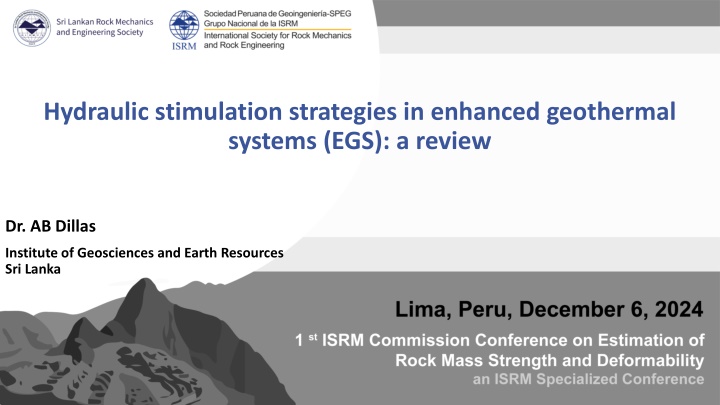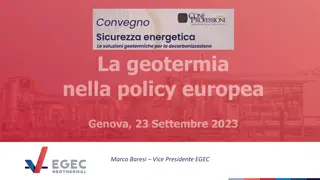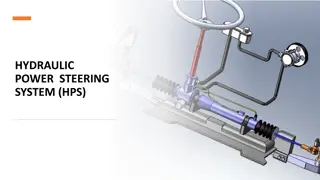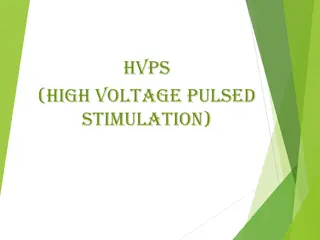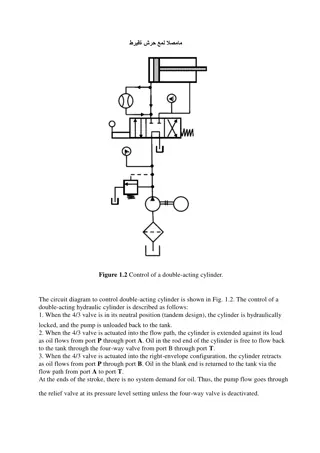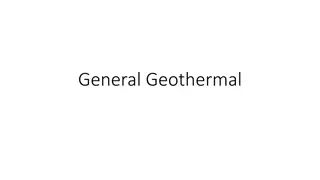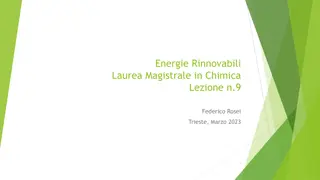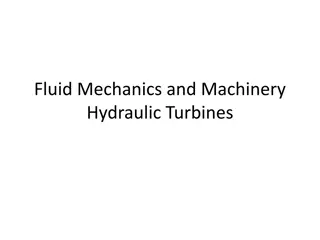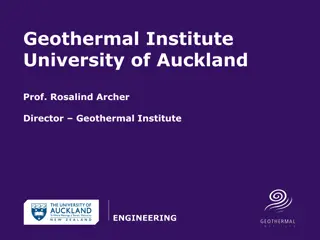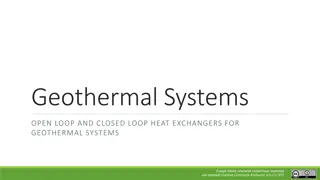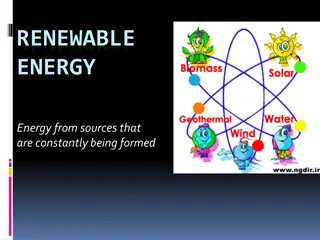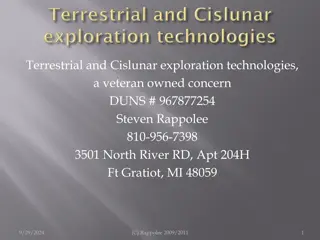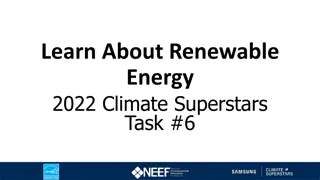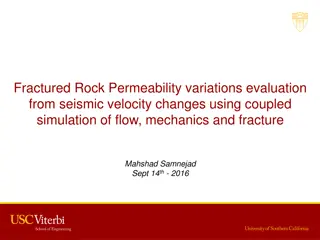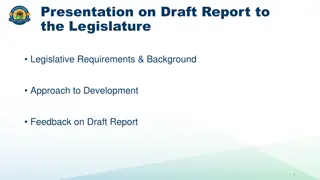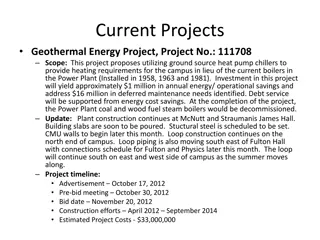Hydraulic Stimulation Strategies in Enhanced Geothermal Systems: A Review
This review discusses hydraulic stimulation strategies in enhanced geothermal systems (EGS), focusing on the continuous circulation of heat and fluid in geothermal fields. It explores how fluids are recharged into the reservoir to prolong the field's commercial lifetime, making geothermal energy a renewable source with larger production rates than recharge rates. The content also includes updates from various countries on geothermal power generation.
Download Presentation

Please find below an Image/Link to download the presentation.
The content on the website is provided AS IS for your information and personal use only. It may not be sold, licensed, or shared on other websites without obtaining consent from the author.If you encounter any issues during the download, it is possible that the publisher has removed the file from their server.
You are allowed to download the files provided on this website for personal or commercial use, subject to the condition that they are used lawfully. All files are the property of their respective owners.
The content on the website is provided AS IS for your information and personal use only. It may not be sold, licensed, or shared on other websites without obtaining consent from the author.
E N D
Presentation Transcript
Hydraulic stimulation strategies in enhanced geothermal systems (EGS): a review Dr. AB Dillas Institute of Geosciences and Earth Resources Sri Lanka
Geothermal Field Geothermal fields, as opposed to hydrocarbon fields, are generally systems with a continuous circulation of heat and fluid, where fluid enters the reservoir from the recharge zones and leaves through discharge areas (hot springs, wells). During industrial exploitation, fluids are recharged to the reservoir by reinjecting the waste fluids from the utilization plants through wells. This reinjection process may compensate for at least part of the fluid extracted by the production and will to a certain extent prolong the commercial lifetime of the field. Geothermal energy is therefore to some extent a renewable energy source; however, the hot fluid production rates tend to be much larger than the recharge rates. 2
1. Beardsmore, G., Davidson, C., Payne, D., Pujol, M., and Ricard, L.: Australia Country Update, Proceedings World Geothermal Congress 2020, Reykjavik, Iceland, (2020). 2. Beate, B., Urquizo, M., and Lloret, A.,: Geothermal Country Update for Equador: 2015 -2020, Proceedings World Geothermal Congress 2020, Reykjavik, Iceland, (2020). 3. Bertani, R.: Geothermal Power Generation in the World 2010-2014 Update Report, Proceedings World Geothermal Congress 2015, Melbourne, Australia (2015) 4. Boissavy, C., Schmidle-Bloch, V., Pomart, A., and Lahlou, R.: Country Update France, Proceedings World Geothermal Congress 2020, Reykjavik, Iceland, (2020). 5. Carey, B, Daysh, S, Doorman, P, Luketina, K, White, B, and Zarrouk, S.: 2015 -2020 New Zealand Country Update, Proceedings, Proceedings World Geothermal Congress 2020, Reykjavik, Iceland, (2020). 3
